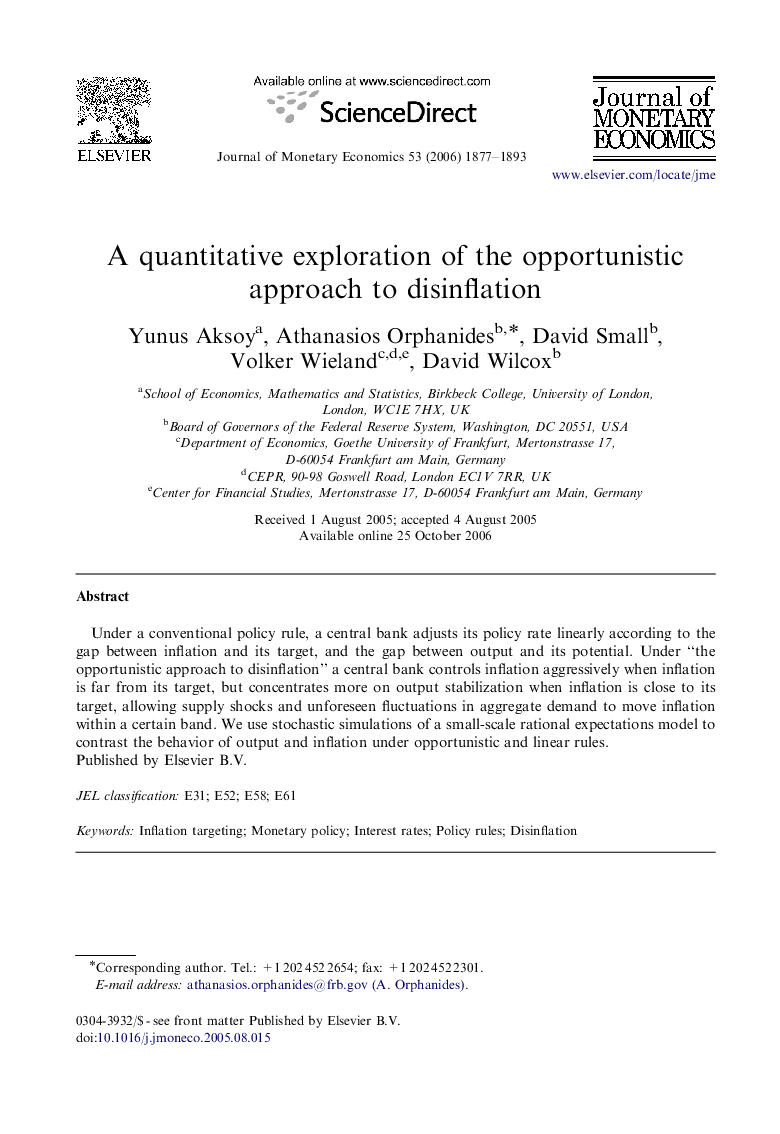| Article ID | Journal | Published Year | Pages | File Type |
|---|---|---|---|---|
| 968058 | Journal of Monetary Economics | 2006 | 17 Pages |
Abstract
Under a conventional policy rule, a central bank adjusts its policy rate linearly according to the gap between inflation and its target, and the gap between output and its potential. Under “the opportunistic approach to disinflation” a central bank controls inflation aggressively when inflation is far from its target, but concentrates more on output stabilization when inflation is close to its target, allowing supply shocks and unforeseen fluctuations in aggregate demand to move inflation within a certain band. We use stochastic simulations of a small-scale rational expectations model to contrast the behavior of output and inflation under opportunistic and linear rules.
Related Topics
Social Sciences and Humanities
Economics, Econometrics and Finance
Economics and Econometrics
Authors
Yunus Aksoy, Athanasios Orphanides, David Small, Volker Wieland, David Wilcox,
